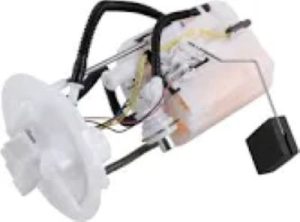It normally draws in the range of 4 to 8 amps, depending on the type of fuel pump, model of vehicle, and the required fuel pressure. On most regular passenger vehicles, the pump operates on a 12-volt electrical system, equating to about 48 to 96 watts of power consumption. In most vehicles, this is a constant rate of power draw because it maintains the pump at a pressure where it can pump fuel constantly between 40 and 60 PSI to the engine so that it achieves proper flow for the smooth running of the engine with efficient combustion.
High-performance fuel pumps found on most modified or high-horsepower vehicles run on more power to keep up with the higher fuel demands. Such a pump could draw between 10 and 15 amps or about 120 to 180 watts. This would allow operation at a much higher power and keep pressure above 80 PSI for a turbocharged or supercharged engine that requires a steady supply of fuel under heavy loads. Performance and mechanical technicians report that higher-capacity electrical components, including relays and wiring, may be needed when installing high-output fuel pumps, as higher current draw can lead to overheating or even complete electrical failures.

In general, heavy-duty fuel pumps draw more power on working trucks or vehicles with heavy use, especially in diesel applications where fuel injection pressures are much higher. These pumps often run at about 10 amps or 120 watts to facilitate adequate fuel flow when going through harsh temperature fluctuations or extreme towing. The high pressure the diesel fuel systems ask for usually necessitates external fuel pumps that couple with heavy-duty electrical systems able to tolerate continuous draws on power without reliability compromises.
Fuel pumps should have optimum power efficiency as increased voltage or current affects fuel delivery consistency. The occurrence of an obstruction in the pump, making it pull more power than required may lead to overheating and, therefore, cut down the life of the pump. According to research, with continued overdraw on fuel pumps, operational life can be reduced by 15-20% and that's why clean fuel filters and normal routine checkups for power demands are at their normal operating range.
Understanding the power requirements of a given fuel pump aids in selecting the appropriate type of pump for particular vehicle needs and electrical component capability with added benefits, including improved fuel economy and better performance by the engine.
